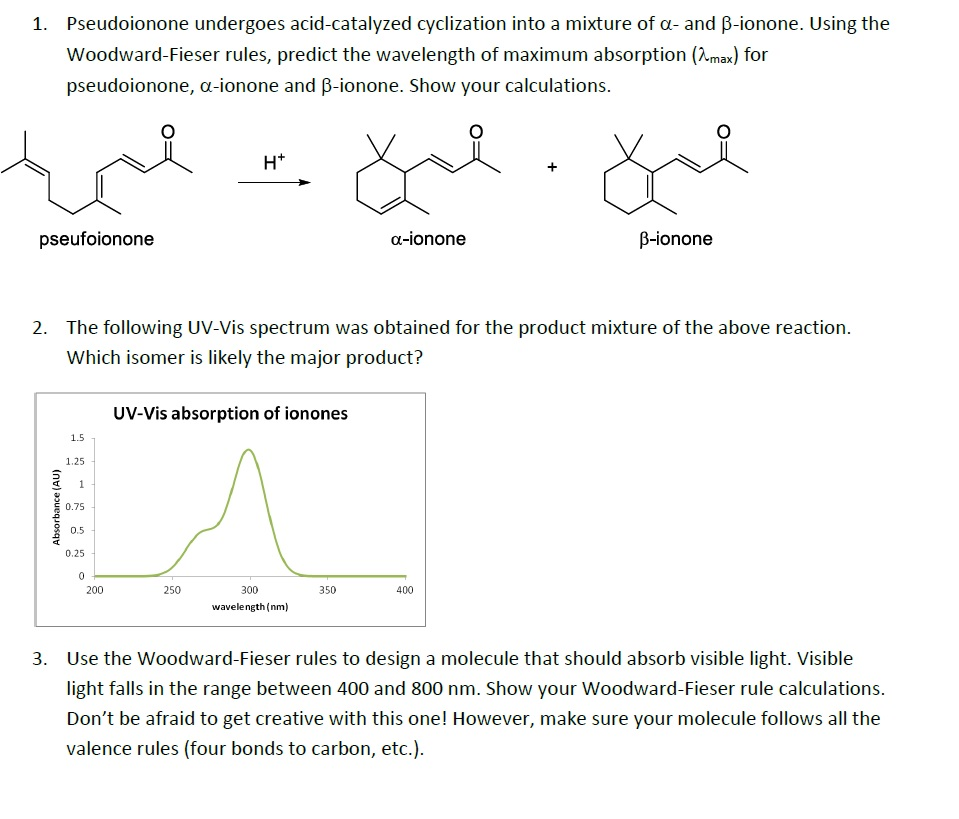

This diene group has 4 alkyl substituents (labeled 1,2,3,4) and the double bond in one ring is exocyclic to the other (adding 5 nm for an exocyclic double bond). In the compound on the left, the base value is 214 nm (a heteroannular diene). With the aid of these rules the UV absorption maximum can be predicted, for example in these two compounds: Rules for wavelength of maximum diene absorption A diene is either homoannular with both double bonds contained in one ring or heteroannular with two double bonds distributed between two rings. One set of Woodward–Fieser rules for dienes is outlined in table 1. Examples are conjugated carbonyl compounds, conjugated dienes, and polyenes. Inputs used in the calculation are the type of chromophores present, the auxochromes (substituents on the chromophores, and solvent. Woodward's rules, named after Robert Burns Woodward and also known as Woodward–Fieser rules (for Louis Fieser) are several sets of empirically derived rules which attempt to predict the wavelength of the absorption maximum (λ max) in an ultraviolet–visible spectrum of a given compound.

For rules related to pericyclic reactions, see Woodward–Hoffmann rules.

This article is about rules related to spectroscopy.


 0 kommentar(er)
0 kommentar(er)
